Last week, after deciding to paint some true beauties of the season (lilacs from my back yard), I faced a dilemma – which pigment should I use: modern or historical? As you know, I love using the natural pigments but sometimes there is no easy choice. In the historical/natural pigment world there are no rich brilliant purples available – with the exception of one that is not usually in an ordinary artist’s paint box.
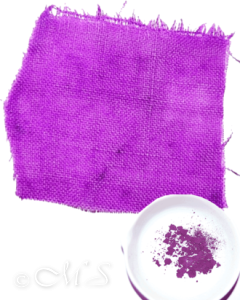
That pigment is Tyrian Purple made from the Purpra Lapillus, a shellfish which excretes a beautiful purple dye. Centuries ago, this dye was used to adorn the robes of kings and other royalties and to dye cotton, silk, and wool. I discovered and wrote about this pigment during my Lessons from the Low Country Pigment Project. Sadly, it takes approximately 10,000 sea snails boiled in huge vats for days to make one gram of this color. Today it is available for a mere $4,280 per one gram at artist material suppliers, although probably not your local Michaels Craft Supply.
Fortunately, there are some lovely modern pigments to replicate the authentic Tyrian Purple. To paint my lilacs, I chose Graham’s Quinacridone Rose, Rembrandt’s Rembrandt Blue (a very old tube in my paint drawer), and Daniel Smith’s Quinacridone Magenta with bits of other reds and pinks that were on my palette also. You can see the splendid variety of light to dark violet/purples here in the color swatches made from 3 colors plus white. Quinacridone Magenta and Rembrandt Blue make a stunning rich nearly black dark. You could substitute the Rembrandt Blue with Ultramarine Deep.
Sensation 5×7 Modello Oil Painting on Gold Leaf
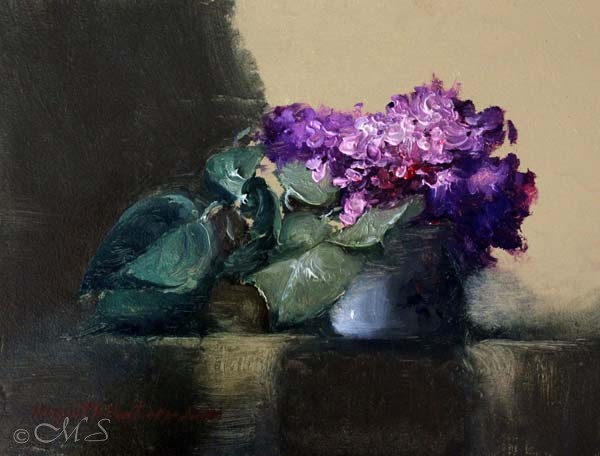
Copyright Margret E. Short 2016
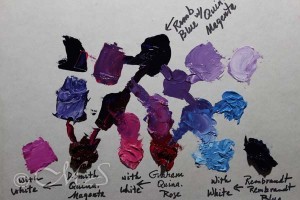
Rembrandt Rembrandt Blue with white and pure at right. Many variations of mixtures.
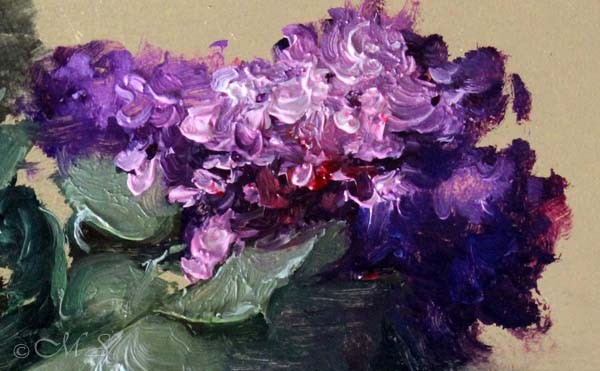
♦
Sensational 6×8 Modello Oil Painting on Panel
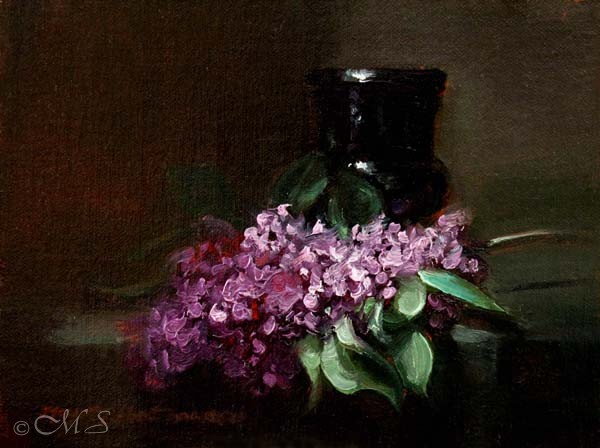
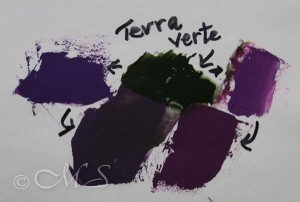
Grayed out colors two bottom samples. Terra verte is naturally a low chroma pigment.
It easily knocks down the intensity of the others without overpowering them.
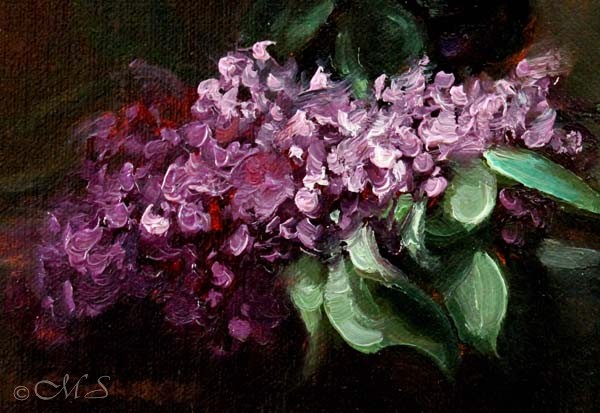
♦
Fragrant Wonder Oil Painting on Linen
For the deeper colors in Fragrant Wonder (below), I used the same tube colors but in different proportions of blue to magenta and rose. with varying amounts of white. You can see the amazing range of hues achieved here in these paintings with just 3 colors. The trick with the rich dark purples is to be wary of getting too garish with the color so be sure and knock it down some with something. I used Williamsburg Italian terra verde. For now, I will continue to use modern paints for purples/violets in my paintings, at least until I want to fork out a cruise on the Rhine for a gram of color made from the illusive sea snail.
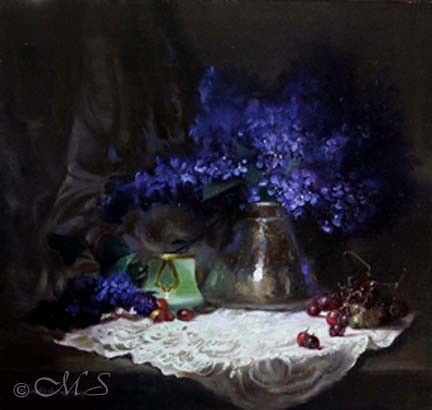
Copyright 2016

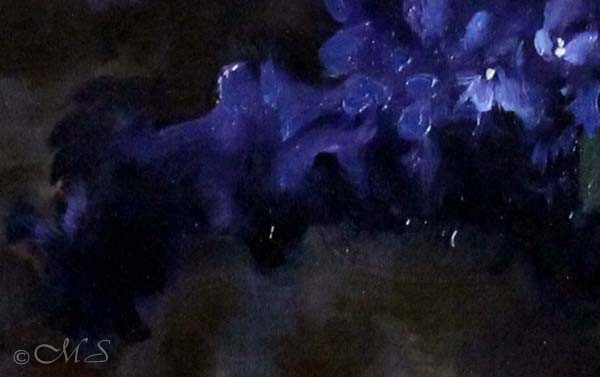

Love your lilacs.
Hello Karen, Thanks for your nice comments. Margret
Just beautiful! Thank you for sharing.
Now, I have to get those paints!!
Janie Horn
Hello Janie, So glad you found this information helpful. There are lots of violets and purples now on the market. I am not sure about the Rembrandt Blue, as I said it was an old tube in my drawer. Another blue that is similar is hyacinth blue, sort of a cross between phalo blue and ultramarine. Have fun! Margret
Hi Margaret,
I am a fan of your work and am interested in “Fragrant Wonder”.
Lovely!
Is the oil painting available for sale?
Thank you very much,
Cynthia Lynch
Hello Cynthia, Thank you for your inquiry. Yes, indeed, Fragrant Wonder is available at Highlands Gallery. Contact Cheryl McDowell at 908-766-2720. or http://www.highlandsartgallery.com/ I will also send your information to her. Please let me know if I can help you in any other way. Best Regards, Margret
Well of course we love them all. Perfect for Mother’s Day and hope you had a happy one. Love from your So Cal Cousins xo xo xo, Gary & Char xo